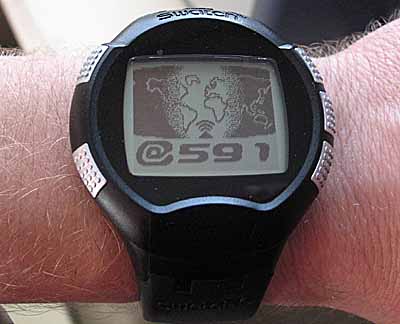It is Time...
The way time works is completely broken. Timezones are dictated by politics and not geography, and even then they don't work because we're now a Global Village connected by the Internet. Swatch solved these problems years ago, but nobody listened.
In 1998, the Swiss watchmaker created "Swatch Internet Time", also known as "beat time". Internet Time only has one timezone and it is based off the solar day as experienced at Biel, Switzerland. The day is divided into 1,000 "beats", each lasting 1 minute 26.4 seconds. Mid-day in Biel is 500 beats. Or more appropriately, "@500", the proper notation for writing beat time.
The single timezone means that @500 is @500 everywhere, only some places it will be the middle of the night, and others it will be lunchtime (like in Switzerland). This initially seems awkward, but it is no more awkward than being told a time and a country, and then having to work out how many hours behind or ahead they are. It may even save you having to Google Bing search for the difference. See, it could save you a lot of "time". Hahaha...
Zulu
Pilots already use a single timezone for planning, navigating and flying. They use Zulu time, also known as Greenwich Mean Time (GMT).
Zulu time is usually written like 1345.9z. This is 1:45:54pm GMT, but also shows an important distinction between clever pilots and those stupid enough to think our current time system works: they DECIMALISE each minute. Decimalisation makes it much easier to work out what time you will be somwhere because our brains are rigged for base-10 calculations. And so are our bodies. We all understand how to do mathematics in lumps of 10s because that's how many fingers we have.
Internet Time is similarly easy to work out because you just add 10s and 100s, etc.
Join the Revolution
I invite you to join the Internet Time revolution! I have written a jQuery UI widget to allow you to easily add a Swatch Internet Time clock to your website.
In this ZIP file you will find a working example of the clock, a basic CSS stylesheet showing how to style it, the original JavaScript source code, and a minified version (weighing in at a lightweight 558 bytes!):
The trick is to add a div onto your webpage with a class called "richstokoe-swatch":
Any elements with this class will automatically be turned into Swatch Internet Time clocks when the JavaScript loads (make sure you put the script tag that imports the swatch JavaScript file after any elements which have the richstokoe-swatch class!!).
By default, the following HTML is placed before the time digits:
And this is placed after it:
You can override what is displayed before and after by using the following code to set the "prefix" and "postfix":

Comments...